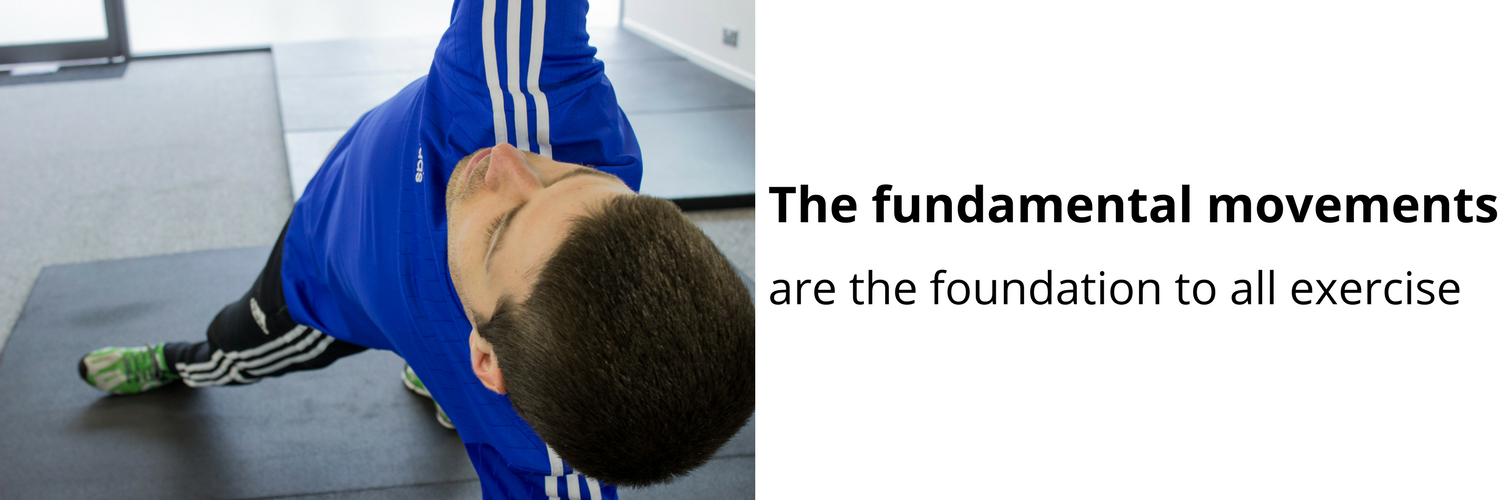
What are the fundamental movement habits?
Poor movement & injury
According to the joint-by-joint approach proposed by Gray Cook “Loss of function in the joint below, in the case of the lumbar spine, it’s the hips, seems to affect the joint or joints above. In other words, if the hips can’t move the lumbar spine will.” He continues, “When the intended mobile joint becomes immobile, the stable joint is forced to move as compensation, becoming less stable and subsequently painful.” Developing movement in this way allows the mobile joint to be mobile and the stable to joints to be stable.
This example is happening all over the body and it’s helping us get around problems rather than working through them.
In his book Low Back Disorder Dr Stuart McGill shares, “injury during occupational and athletic endeavors involves cumulative trauma from repetitive sub failure magnitude loads”. This can be likened to the saying “the straw that broke the camels back”. He continues “as tissues fatigue with each cycle of load and correspondingly the failure tolerance lowers, the margin of safety eventually approaches zero, at which point this individual will experience low back injury”. This suggests many cases of low back pain are due to fatigued tissue surrounding the lumbar spine and low back.
Better movement & overcoming injury
In is paper Designing Back Exercises: From rehabilitation to enhancing performance Dr McGill also shares “ groove appropriate and perfect motion and motor patterns. Encode movement engrams” as one of his stages of therapeutic exercise.
Better movement & performance
In an article by Andrew Charinga, he says in the case of weightlifting “A straight or slightly arched back during the snatch and the clean is needed to create and preserve a “rigid” connection between the support and the barbell. Should the back “round” during the lift from the floor, some of the force produced by the legs will be dissipated by the sagging of the trunk. Therefore, some of the lifting force will not be effectively communicated to the barbell.”
What is been described in the previous four paragraphs is:
- Poor movement can you increase risk of injury
- Repeated poor movement can increase trauma and eventually injury
- Improving movement is a way of reducing risk of injury and improving performance
The fundamental movements
- Lifting
- Carrying
- Walking
- Pushing
- Pulling
- Rotating
- Getting up
- Running
By improving these eight fundamental movements you give yourself a greater chance of better performance and less injury. By repeatedly performing these movements well allows them to be installed into your brain as unconscious habits and thus upgrading your default movement.
Reference
- Gray Cook. (2010). Joint by Joint Concept. In: Gray Cook Movement. USA: On Target Publications. Appendix 1.
- Dr Stuart McGill (2007). Low Back Disorders: Evidence-based Prevention and Rehabilitation. 2nd ed. USA: Human Kinetics. p12.
- McGill, S.M, 2010. Super stiffness. [Online] Available at http://www.backfitpro.com/pdf/enhancing_back_performance_with_super_stiffness.pdf . [Accessed 07 August 14]
- Andrew Charniga, Jr.. 2003. Essential Components of Weightlifting Technique – part 1. [ONLINE] Available at: http://www.dynamic-eleiko.com/sportivny/library/farticles010.html. [Accessed 29 September 14].